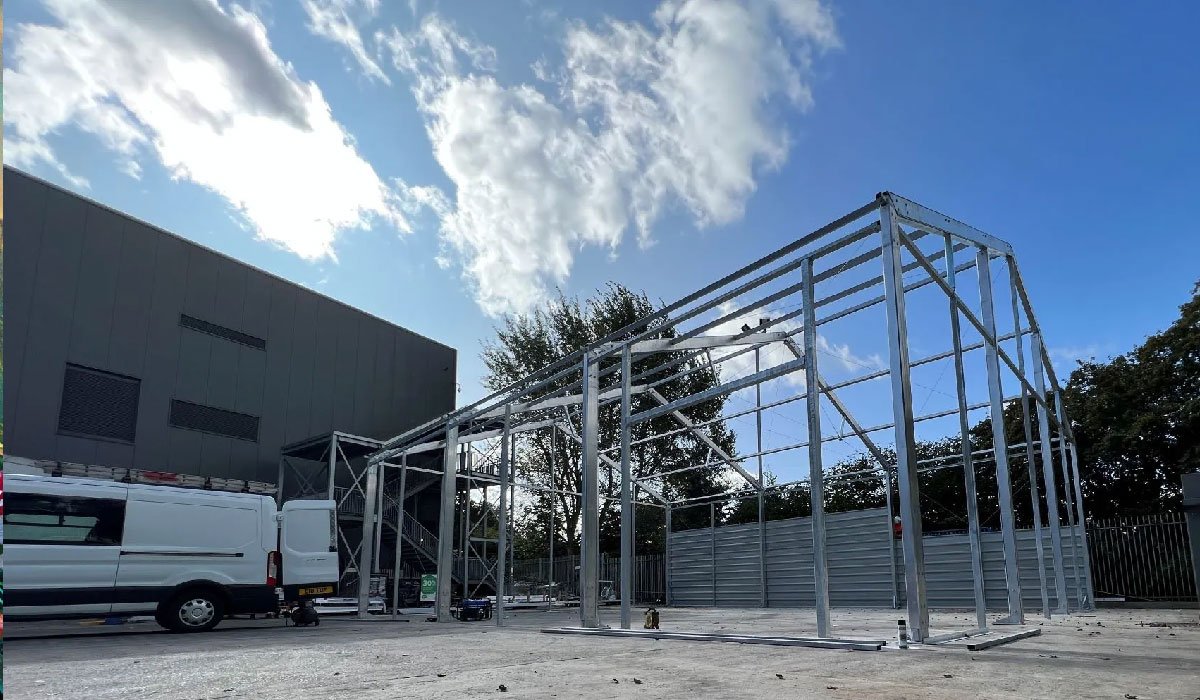Business
Temporary Structures and Their Risks: Why Proper Installation Is Critical

Temporary structures, such as scaffolding, formwork, and staging platforms, are essential components of construction projects. These structures provide support, access, and safety for workers during critical phases of a project. However, when improperly installed, temporary structures can pose significant risks, including collapses, falls, and structural failures. Ensuring proper installation and maintenance is not just about meeting safety standards—it’s about protecting lives and preventing costly accidents.
Construction sites are dynamic environments with constantly changing conditions, which makes the stability of temporary structures even more critical. Small oversights, such as uneven ground, faulty materials, or inadequate inspections, can lead to catastrophic failures. For workers and site managers, understanding the potential hazards and addressing them proactively is a key responsibility that impacts the success of the entire project.
Why Temporary Structures Are Essential in Modern Construction
Temporary structures are designed to support workers and materials during construction, ensuring projects can be completed efficiently and safely. Scaffolding provides access to elevated areas, while formwork supports concrete as it cures. These structures are indispensable for modern construction, but their temporary nature often leads to a lack of prioritization in planning and inspection.
Despite their intended short-term use, these structures must meet strict safety standards to prevent accidents. Structural integrity, weight limits, and proper anchoring are crucial factors that determine their reliability. Neglecting these aspects can endanger workers and result in project delays. Prioritizing the safety of temporary structures is essential to maintaining productivity and avoiding unnecessary risks.
Contractor’s Responsibility for Safe Temporary Structures
Contractors play a crucial role in ensuring the safety of temporary structures by following proper installation guidelines and industry regulations. They must conduct thorough site assessments, use quality materials, and adhere to engineering specifications to prevent structural failures. Neglecting these responsibilities can lead to collapses, injuries, or even fatalities, making compliance with safety standards essential.
Beyond installation, contractors must provide ongoing oversight to detect potential hazards before they escalate. Regular inspections, proper worker training, and adherence to local building codes help mitigate risks. When accidents occur due to negligence, contractors can be held liable, emphasizing the importance of accountability in maintaining safe temporary structures.
Identifying Risks in Temporary Structure Usage
Temporary structures on construction sites pose significant safety hazards when improperly installed or maintained. Here are the most common risks:
- Scaffolding Collapses – Unstable foundations, overloaded platforms, or missing safety rails often lead to scaffolding accidents. These incidents can result in serious injuries or fatalities from falls.
- Falls from Heights – Poorly maintained temporary structures increase the risk of falls, which remain one of the leading causes of construction site fatalities.
- Formwork Failures – Insufficient bracing or incorrect assembly can cause formwork to collapse. These failures put workers at risk of being struck or trapped under heavy debris.
- Structural Instability – Temporary supports and frameworks that are not properly anchored or reinforced can shift or collapse under load, endangering workers and nearby equipment.
- Inadequate Safety Inspections – Skipping or rushing safety inspections increases the likelihood of accidents, as critical flaws in temporary structures may go unnoticed.
Addressing these risks requires comprehensive training, careful planning, and strict adherence to safety protocols. Thorough inspections and compliance with design specifications are essential for ensuring worker safety.
Legal Rights of Workers Injured by Unsafe Temporary Structures
Accidents involving temporary structures often lead to serious injuries or fatalities, bringing legal and financial consequences for employers and contractors. In many cases, victims or their families pursue compensation to cover medical expenses, lost income, and other damages. A Henderson construction accident lawyer can provide guidance for workers injured due to unsafe conditions or negligence on construction sites.
Legal claims may focus on a range of factors, including improper installation, failure to inspect, or the use of substandard materials. Employers and site managers have a duty to ensure that all temporary structures meet safety standards and are properly maintained. Failure to fulfill this duty can result in significant liability, emphasizing the need for vigilance and compliance.
The Importance of Training and Expertise
Proper installation of temporary structures begins with well-trained workers who understand the risks and best practices. Training should include detailed instruction on assembly procedures, weight limits, and inspection protocols. Workers must also be trained to identify potential hazards, such as shifting ground or damaged components, that could compromise a structure’s stability.
Employers play a critical role in providing ongoing training and ensuring that only qualified personnel are involved in installing and maintaining temporary structures. Investing in expertise not only reduces the likelihood of accidents but also ensures compliance with safety regulations. A culture of safety and accountability starts with proper education and consistent enforcement of standards.
Inspections: A Crucial Step for Safety
Regular inspections are one of the most effective ways to ensure the safety of temporary structures. Pre-use inspections should focus on identifying any visible defects or weaknesses in materials and ensuring proper assembly. Ongoing inspections during the project can catch changes in site conditions, such as weather or shifting loads, that may compromise structural integrity.
Employers should implement a checklist-based system to ensure thorough inspections are carried out at every stage. Documenting these inspections not only promotes accountability but also serves as evidence of compliance with safety regulations in the event of an accident. Frequent inspections are a proactive measure that can save lives and prevent costly disruptions.
Choosing Quality Materials for Temporary Structures
The quality of materials used in temporary structures is a significant factor in their safety and reliability. Substandard or damaged materials, such as weakened scaffolding poles or degraded planks, increase the risk of failure. Contractors must source materials from reputable suppliers and regularly inspect them for wear and tear before use.
Even high-quality materials can fail if they are not used correctly or maintained properly. Temporary structures should be stored in conditions that prevent damage from moisture, corrosion, or other environmental factors. Ensuring that all materials meet industry standards and are in good condition minimizes the potential for accidents and delays.
Preventing Future Accidents Through Proactive Measures
Preventing accidents involving temporary structures requires a proactive approach to safety. Employers and site managers must prioritize proper planning, training, and inspections to address potential risks before they escalate. Regular audits of safety protocols and adherence to industry standards are critical steps in creating a safer work environment.
Implementing a safety-first mindset across all levels of a construction project fosters accountability and reduces the likelihood of accidents. Addressing temporary structure risks with diligence and care allows construction sites to operate more efficiently while ensuring the safety and well-being of workers. Proactive safety measures not only save lives but also contribute to the overall success of the project.
For More Information Visit Coopermagazine
-

 Celebrity1 year ago
Celebrity1 year agoWho Is Jennifer Rauchet?: All You Need To Know About Pete Hegseth’s Wife
-

 Celebrity1 year ago
Celebrity1 year agoWho Is Mindy Jennings?: All You Need To Know About Ken Jennings Wife
-

 Celebrity1 year ago
Celebrity1 year agoWho Is Enrica Cenzatti?: The Untold Story of Andrea Bocelli’s Ex-Wife
-

 Celebrity1 year ago
Celebrity1 year agoWho Is Klarissa Munz: The Untold Story of Freddie Highmore’s Wife
















